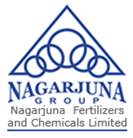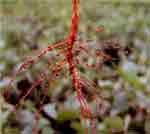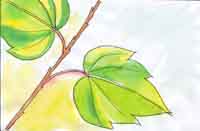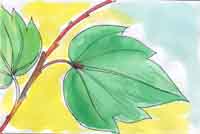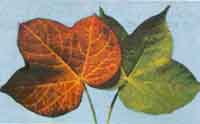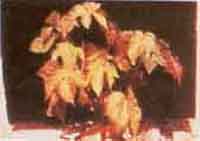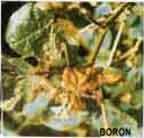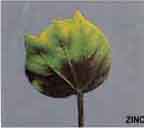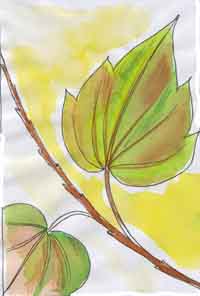Urea
There has been a worldwide shift from prilling of Urea to granulation because the more desirable products made in granulator. This shift has taken place to supply growing fertilizer demand for larger, harder and denser particles, in spite of traditionally higher costs associated with granulation.
Urea finishing Processes
Urea can be prilled, granulated, flaked and crystallized. Presently only prilling and granulation is considered important. Most new plants that plan to ship internationally utilize granulation because of it’s far superior handling and storage qualities Comparative product characteristics are and a brief on two types of finishing process are given below:
Prilling
Using a spinning bucket, showerhead or acoustic vibration makes Prilled urea. The most common method is spinning bucket. Stamicarbon uses it’s own design for the buckets, Snamprogetti and Toyo both use the Tuttle bucket, that is also being used in our Kakinada plant.
In prilling, the urea melt is concentrated via vacuum evaporation to 99,8% and fed as quickly as possible into bucket to minimize buiret formation. The liquid form drops that then fall down a cylindrical concentrate tower that has either induced, forced or natural draft airflow. The prills solidify and are removed at bottom by belt conveying to storage. Some plants have a fluid-bed cooler in prill tower bottom and others use an in-line cooler before storage. If low biuret product is to be produced, the urea melt from the last decomposition stage of the synthesis plant is first crystallized and the crystals are then melted before prilling.
Granulation:
The granulation involves spring molten urea through series of the fine nozzles in a fluidized bed granulator. Cooling the liquid urea slowly while rolling it in layers, creating a harder more evenly sized granule makes granules of urea. There has been a world wide shift from prilling of urea to granulation because of the more desirable products made in granulators. This shift has taken place to supply growing fertilizer demand for larger, harder and denser particles, in spite of traditionally higher costs associated with granulation.
There have been many granulation processes developed and operated through the years. These include TVA pan granulation, C&I Girdler spherodizer spray drum, Norsk Hydro pan granulation and Fisons.
Rotary drum garnulators produce granules by spaying a concentrated melt (99.0 to 99.8%) onto small seed particles of urea in a long rotating cylindrical drum. As the seed particles rotate in the drum, successive layers of Urea are added to the particles, forming granules. Granules are removed from the granulator and screened. Off size granules are crushed and recycled to the granulator to supply additional seed particles or are dissolved and returned to solution process.
Pan ganulators operate on the same principle as drum granulators, except the solids are formed in a large, rotating circular pan. Pan granulators produce a solid product with physical characteristics similar to those of drum granules.
Since the solids are produced in a vide variety of sizes, they must be screened for consistently sized prills or granules. Cooled prills are screened and off size prills are dissolved and recycled to the solution concentration process.
Urea: Comparative Product Characteristics
| Products Characteristics | Prilled (standard) | Granular (Bulk Blend) | Granular (Large Granule)* |
|---|---|---|---|
| Moisture (%) |
0.3
|
0.2
|
0.25
|
| Biuret (%) |
0.9
|
0.7
|
0.70
|
| Formaldehyde (Injection) % |
0.3-0.4
|
0.45
|
0.45
|
| Average size (mm) |
1.7
|
2.5
|
up o 8.0
|
| Crushing strength, kg |
0.6(2mm)
|
3.0(2.5mm)
|
10(6.3mm)
|
| Caking |
Yes
|
No
|
No
|
| Nitrogen content (%) |
46
|
46
|
46
|
| Color |
Pure White
|
White
|
White
|
* Used, for example for forest application (3-5 mm size)
The properties in of different finished products of urea
Here some of the results of trials conducted on granular urea along with other urea products show the properties of various forms and their comparisons:
Experiment 1: Nitrogen losses and fertilizer N recovery from modified urea under wetland rice on a sandy loam soil in Mandya, Karnataka:
| Source of N | Losses as applied N | Paddy Yield Kg/Hac | ||
|---|---|---|---|---|
| Volatilization | Leaching | Total Loss | ||
| Prilled Urea |
4.2
|
14
|
18.2
|
3780
|
| NCU (Neem coated) |
2.3
|
6.1
|
8.4
|
5040
|
| Urea super Granular |
2.1
|
6.8
|
8.9
|
5140
|
Experiment 2: Paddy yield comparison according to Urea type and granular urea sizes at MADA, Alor Setar, Malasiya, showed the following yields:
| Urea Type/ size |
Yield Kg /Ha
|
|---|---|
| Prilled | 4400 |
| Granular (small) 2.1 mm | 4946 |
| Granular (Medium) 2.8 mm | 4796 |
| Granular (Large) 5.6mm | 5067 |
Experiment 3: Point placement of Granular Urea:
Due to losses in leaching in Nitrogen as reported above case particularly paddy and other crops a new concept of use of Super Granule Urea (SGU) as point placement has been suggested. An experiment was conducted in BAU, Mymensingh- Bangladesh to study the yield patterns in different types of urea in a RBD (Randomized Block Design) in potato crop. The results were as below.
| Type of Urea | Quantity of N* Kg N/Hac | Potato Yield MT/Hac |
Yield Kg /Ha
|
|---|---|---|---|
| Control (without any Fertilizer) |
0
|
10.44
|
NA
|
| Urea prilled |
109
|
17.52
|
NA
|
| USG –2 from USG |
73
|
18.40
|
5.02
|
| USG-3 from USG |
109
|
24.16
|
37.89
|
*Plant Nutrition Other than N was common for all treatments
Hence based on results of above experiments it is clear that:
- Higher the granular size of Urea lesser would be leaching losses and hence better yields.
- Volatilization losses in granular urea are almost half of Prilled as well as neem coated urea.
- Lesser quantity of granular urea gives better yields than granular urea due to saving in leaching and Volatilization losses.
- Point placement of granular urea gives much better yields to point placement, although prill urea also responds favorably to point placement.
Granulation mechanism:
Agglomeration Mechanism:
With most granular NPK Products (excluding the slurry based nitrophosphate-type processes), agglomeration is the principal mechanism responsible for the initial granule formation and subsequent growth. In most agglomeration-type NPK formulations, 50-75% of raw materials is fed as “dry” solids. These solid particles are assembled and joined into agglomerates (granules) by a combination of mechanical interlocking and cementing. The cementing medium for fertilizer granules are derived from salt solutions, for example, pre-neutralized ammonium phosphate slurry and or the dissolution of salts on moist surface of the soluble solid particles. The size, surface texture, strength and solubility of solid particles vary widely and have a profound influence on the granulation characteristics of the mixture.
Accretion Mechanism:
Accretion refers to the process in which Layer upon layer of a fluid material (material example, ammonium phosphate slurry) is applied to a solid particle causing it to grow in size. The slurry type accretion granulation processes are used to produce DAP, MAP,
TSP and some nitrophosphate compounds. The accretion process is quite different from the agglomeration process parameters for optimum operation of these slurry type accretion granulation processes is often quite different from those used in agglomeration processes. With a slurry type granulation applied, dried and hardened to a relatively firm substrate consisting of granules that are often product size or nearly product size. In this process, layer upon layer of new material is applied to a particle, giving the final granule a ‘onion-skin’ like stricture. In the process, of course, some agglomeration of particles also occurs, but this is not a predominant granule formation mechanism.
The recycle - to -product ratio for accretion type granulation is normally higher than that of the required for the agglomeration type processors. Accordingly, for a given production rate, the material handling capacity of the process equipment has been larger for the accretion type plants.
Soil Reaction of Urea (irrespective of type of Urea):
At the field, when the urea contacts the soil, a quick hydration and dissolution of granule is produced, and it disappears from the sight once dissolved. Then urea is subjected to the soil and climate’s own factors, and it breaks down until it reaches the proper form to be absorbed by the plants.
Plants take up nitrogen from soil in the mineral forms of nitrogen, both ammonium and nitrate before converting it to plant protein nitrogen. Plants vary in their preference to utilize either form of nitrogen. Nitrate is considered the main source because it is more mobile in the soil. On addition to soil, urea dissolves into soil solution and is converted to ammonium and then to nitrate.
Conversion is favoured by :
- Temperature: The activity range is wide. From -20° C to 37° C with optimum >20° C
- Organic Matter: Activity is enhanced in soil high in organic matter which favours microbial activity
- Time: The time for urea to be converted to ammonium will depend on the conditions of moisture and temperature. The reaction will begin to occur 24 hours after application and be complete within 2-5 days.
Recommendation
- Granulated Urea is as efficient as any other nitrogen fertilizer when incorporated into soil immediately after application.
- Urea often has a lower density than other fertilizers with which it is blended. This lack of “weight” produces shorter “distance of throw” when fertilizer is applied with spinner – type equipment. In extreme cases this will result in uneven crop growth and “wavy” or “streaky” fields
- In crops like paddy when it has to be used in standing water, as being larger size it takes a few minutes to drown in water. Hence, do not apply it even if there is slight movement of water. Though, it is always recommended to apply fertilizers when standing water level is only 2-3 cm.
- Do not store it near hay or organic products such as pesticides or fuels. Give room for air circulation and separate roof stowing by at least one meter.
Advantages in Use of Granulated Urea:
- Better industrial quality
- Even granulometry
- Harder granules
- Absorbs lesser moisture from atmosphere
- Can be mixed with other fertilizers
- Does not become compact
- Best adaptation to humid climates
- Less leaching loss hence, environment friendly
- It has less fines and dust when handled and transported
- It is three times harder than prilled urea.
- Granules are larger, harder and more resistant to moisture. As a result, granulated urea has become a more suitable material for fertilizer blends
Best Condition for efficient absorption of ammonium ions:
- When urea is well washed into soil.
- When the soil has high adsorption capacity
- When soil is sufficient moist
- When the soil a low pH
- At low temperatures
Unfavorable conditions of ammonium ions:
- Persistent drought
- High temperatures ( > 25° C) and strong winds
- Soil which has a low capacity for adsorbing ammonium ions
- Soil which has a high pH
- Dry cloddy soils that limit the physical mixing of urea with soil can increase volatilization.
Restriction:
- Do not mix with Superphosphates unless applied shortly after mixing. Urea will react with Superphosphates, releasing water and resulting water molecules and resulting in a damp material which is difficult to store and apply.
- Do not apply urea either forms of prilled or granular along with seeds or close to root zone resulting in death of seed /seedlings.
Critical Humidity:
Critical Humidity of urea at 30° C is 75.2%. (Critical humidity is level of humidity for a given temperature, at which a product begins to take up moisture from the atmosphere.
Solubility:
Urea (both granular and prilled) is completely soluble in water. Its maximum solubility is 30 kg of urea per 100 litres of water. Be aware that with water it gives a cold reaction, so take care on cold and frosty mornings.
Questions related to Fertilizer
1. Nitrogen in Urea is in form of:
Ans: Carbamide (Nitrogen After dissolution in soil it is converted to Ammonium ions)
2. Immediate after dissolution in soil urea is in what form?
Ans: Ammonium Ions
3. Most favorable temperature for conversion of Urea from Ammoniac form to Nitrate form
Ans: -20 to 370C
5. What is the Average size of prilled Urea?
Ans: 1.7 mm
6. What is Volatilization?
Ans: It is evaporation of Urea as ammonia into atmosphere when left exposed to sunlight and air.
7. What is Critical Humidity of Urea at 300C?
Ans: 75.20C (CH is the level of humidity for a given temperature at which a product begins to take up moisture from atmosphere.
8. What is maximum solubility of Urea in kg per 100 liters of water.
Ans: 30 kg in 100 liters of water.
9. What is a chemical formula of Urea? CO2(NH2)2/ CO(NH2)3/ CO(NH2)2 / CO(NH3)2
Ans: CO(NH2)2
10. Why plant is killed when Urea is applied to root zone Plant?
Ans: Due to toxicity caused by high pH and ammonia concentration around moist root zone
11. Urea should not be mixed with what fertilizer and why?
Ans: superphosphate due to release of water molecules and creating damp material.
12. Urea should not be stored with what fertilizer and why?
Ans: Ammonium Nitrate CRH Urea -75.2%, AN -59.4% but Urea +AN -18.1%
13. Percentage of Sulphur in ammonium Sulphate
Ans: S- 23%
14. Percentage of Nitrogen in Calcium Ammonium Nitrate & form of N
Ans: Ammoniacal N 12.5% & Nitrate N 12.5%
15. Chemical Formula for 21% zinc sulphate and called as
Ans: Zinc Sulphate Heptahydrate (ZNSO4. 7H2O)
16. Percentage of Boron in Borax
Ans: B-10.5%
17. Forms of Nitrogen & their percentage in 19:19:19
Ans: Nitrate 4.0% Anominiacal Nitrogen 4.5% & Urea Nitrogen 10.5%
18. Form of Nitrogen in Multi –K
Ans: Nitrate 13%
19. Weight of sample drawn from complex and straight fertilizers( other than micro nutrients) by Inspector
Ans: 400 gm
20. Who authorizes a Fertilizer Inspector to draw Fertilizer sample
Ans: A fertilizer Inspector is appointed by State or Central Government through notification.
